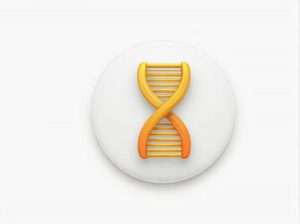Purines and pyrimidines are essential components of nucleotides which are the building blocks of DNA and RNA. Their biosynthesis is tightly regulated to maintain cellular function and balance nucleotide levels. Disruptions in these pathways can lead to metabolic disorders cancer and other diseases.
This topic explores the regulation of purine and pyrimidine biosynthesis including key enzymes feedback inhibition mechanisms and metabolic pathways.
1. Overview of Purine and Pyrimidine Biosynthesis
Purines and pyrimidines are synthesized through de novo pathways (from simple molecules) and salvage pathways (recycling of existing bases). The regulation of these pathways ensures a steady supply of nucleotides for DNA replication RNA synthesis and energy metabolism.
- Purines (adenine and guanine) are synthesized from ribose-5-phosphate amino acids CO₂ and ATP.
- Pyrimidines (cytosine thymine and uracil) are formed from carbamoyl phosphate aspartate and ribose-5-phosphate.
Both pathways are highly regulated to prevent excessive or insufficient nucleotide production.
2. Regulation of Purine Biosynthesis
Key Enzymes in Purine Biosynthesis
The de novo synthesis of purines begins with the conversion of ribose-5-phosphate into 5-phosphoribosyl-1-pyrophosphate (PRPP) by the enzyme PRPP synthetase. The major regulatory steps involve:
- Glutamine-PRPP amidotransferase – Converts PRPP into 5-phosphoribosylamine initiating purine synthesis.
- IMP Synthase – Produces inosine monophosphate (IMP) the precursor of AMP and GMP.
Feedback Inhibition of Purine Biosynthesis
To prevent overproduction purine biosynthesis is controlled by feedback inhibition at multiple points:
- PRPP synthetase is inhibited by high levels of ATP ADP and GDP.
- Glutamine-PRPP amidotransferase is inhibited by AMP GMP and IMP.
- AMP and GMP synthesis is regulated by their own end products (AMP inhibits adenylosuccinate synthetase GMP inhibits IMP dehydrogenase).
These mechanisms ensure a balance between adenine and guanine nucleotides.
3. Regulation of Pyrimidine Biosynthesis
Key Enzymes in Pyrimidine Biosynthesis
The de novo pathway for pyrimidine biosynthesis starts with the formation of carbamoyl phosphate by the enzyme carbamoyl phosphate synthetase II (CPS II). The key steps include:
- CPS II – Forms carbamoyl phosphate from glutamine and CO₂.
- Aspartate transcarbamoylase (ATCase) – Converts carbamoyl phosphate into carbamoyl aspartate.
- Dihydroorotate dehydrogenase – Produces orotic acid a pyrimidine precursor.
Feedback Inhibition of Pyrimidine Biosynthesis
Pyrimidine biosynthesis is also regulated through feedback inhibition:
- CPS II is inhibited by UTP and activated by ATP and PRPP.
- OMP decarboxylase which converts orotidine monophosphate (OMP) to uridine monophosphate (UMP) is inhibited by UMP.
This regulation prevents excess pyrimidine accumulation while ensuring a balance with purine synthesis.
4. Coordination Between Purine and Pyrimidine Biosynthesis
Purine and pyrimidine biosynthesis are interconnected. A balance between these two pathways is necessary for DNA and RNA synthesis.
- ATP stimulates pyrimidine biosynthesis ensuring a synchronized supply of purines and pyrimidines.
- PRPP is a common precursor in both pathways linking their regulation.
- DNA and RNA synthesis requires balanced nucleotide pools preventing errors in replication and transcription.
Cells coordinate these pathways through cross-regulation and energy-dependent feedback loops.
5. Role of Salvage Pathways in Regulation
Besides de novo synthesis cells recycle purine and pyrimidine bases using salvage pathways reducing energy consumption.
Purine Salvage Pathway
- Hypoxanthine-guanine phosphoribosyltransferase (HGPRT) recycles guanine and hypoxanthine into GMP and IMP.
- Adenine phosphoribosyltransferase (APRT) salvages adenine into AMP.
A deficiency in HGPRT leads to Lesch-Nyhan syndrome a disorder characterized by purine overproduction and uric acid accumulation.
Pyrimidine Salvage Pathway
- Uridine-cytidine kinase (UCK) and thymidine kinase (TK) salvage uracil cytosine and thymine.
Salvage pathways ensure nucleotide availability under different metabolic conditions.
6. Disorders Related to Purine and Pyrimidine Metabolism
Defects in nucleotide biosynthesis can cause metabolic disorders leading to severe health consequences.
Gout (Purine Overproduction)
- Excess purines lead to uric acid accumulation causing painful joint inflammation.
- Treatment includes xanthine oxidase inhibitors (e.g. allopurinol) to reduce uric acid production.
Orotic Aciduria (Pyrimidine Deficiency)
- A deficiency in orotate phosphoribosyltransferase (OPRT) results in excessive orotic acid excretion and impaired pyrimidine synthesis.
- Treatment includes uridine supplementation to bypass the defective enzyme.
Maintaining proper regulation of purine and pyrimidine metabolism is essential for preventing such disorders.
7. Impact of Nucleotide Biosynthesis Regulation in Cancer Therapy
Cancer cells have high nucleotide demands for rapid proliferation. Targeting purine and pyrimidine metabolism is a strategy in chemotherapy.
Inhibitors of Purine Biosynthesis
- Methotrexate inhibits dihydrofolate reductase reducing purine synthesis.
- 6-Mercaptopurine blocks purine metabolism slowing cancer cell growth.
Inhibitors of Pyrimidine Biosynthesis
- 5-Fluorouracil (5-FU) inhibits thymidylate synthase preventing DNA synthesis in cancer cells.
- Leflunomide targets dihydroorotate dehydrogenase affecting pyrimidine production.
These drugs exploit the dependence of cancer cells on nucleotide biosynthesis.
The regulation of purine and pyrimidine biosynthesis is critical for maintaining cellular function and nucleotide balance. These pathways are controlled through feedback inhibition energy regulation and salvage pathways. Disruptions in these mechanisms can lead to metabolic disorders or be targeted in cancer therapy.
Understanding these regulatory networks provides insights into metabolic control and potential therapeutic applications.



